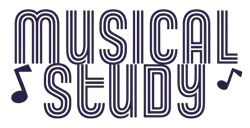DIY Toolkit for Audio Recording
Are you an aspiring dynamic journalist who loves interviewing different kinds of people and making stories about them? If this is the path you choose, then the very least you will need is an audio recording toolkit that you can bring around with you wherever you go. The question is, what’s inside an audio recording toolkit? Let’s take a look at some of the equipment that you SHOULD HAVE inside your kit.

Source: http://www.sfgate.com/entertainment/radiowaves/article/Youth-Radio-Off-the-streets-onto-the-air-3272399.php
A Recording Device
First of all, you are going to need a really good recording device. Back in the old days, journalists used the old recorders that look like the Walkman. Nowadays, there are a lot of very modern portable sound records that are able to purely capture the voice of the interviewee. If you have the budget, then you can buy a good portable sound recorder for your interviews.
If you have absolutely no budget, then you can actually use your smartphone or tablet to record your interview. It may not be as good as an actual sound recorder, but it will do. There are a lot of audio recording mobile apps that can help block off noise. You may download those apps as they will come in handy when you do your interviews.
A Good Microphone
If you want your interviewee to be heard well, then you will need a microphone, especially if you are interviewing people outside. This is necessary if you are a roving journalist that covers stories in rather obscure areas where there are a lot of external noises. The microphone will enable you and your interviewee’s voices to be heard clearly despite the wind, the noises of vehicles, and other things that can be heard there. You can usually attach the microphone to your recording device via USB or a chord.
If you are willing to invest a little more money, you can buy yourself one of those small external microphones that you can attach to your iPhones or iPads. These external microphones are awesome because they are not as bulky as actual microphones which makes things more convenient.
A Pair of Headphones
Although microphones (both the stick microphones and external microphones) are pretty good at cancelling out noise, they may not work all the time. There are times when the wind would just blow past the microphone and make the sound quality low. In order to remedy this, you should wear a pair of headphones whenever you interview. This will make the environment “silent” so that the only sound that will go into the mic are you and your interviewee’s voices.
A Laptop and a Sound Editing Software
Lastly, you should always bring along your laptop when you cover a story so that you can edit the audio file after you’re done. Of course, you have to make sure that you have a good sound editing software in your laptop.

Source: https://outtamybox.wordpress.com/category/seven-speed-bumps-on-the-road-to-a-habit/seven-speed-bumps-on-the-road-to-a-habit-seven-speed-bumps-on-the-road-to-a-habit
With all of those equipment in your audio recording kit, you are now all set to cover stories all over the place! Before you go on your journey, let me just end with some tips on how to use the equipment properly and some rules on how to cover a story so you can get the best output.
- Place the mic exactly two and a half inches away from the mouth of the speaker.
- Set the recording level at the mid range.
- Don’t forget to place the mic near your mouth when you talk.
- Make sure the mic is slightly bent when it is facing the mouth of the speaker.
- Make sure to record Characteristic Sounds. These are the sounds of the environment (ex. car sounds, animals, street music etc.) where the journalist in. These sounds would make the listeners and viewers feel like they are in the place.
- Keep the recorder on at most 1 minute after your interview to record the room tone.
- Always include a stand-up (an introduction of the story to be covered) before you start your interview. Keep it short and always include the 5 W’s (what, who, when, where, why).
